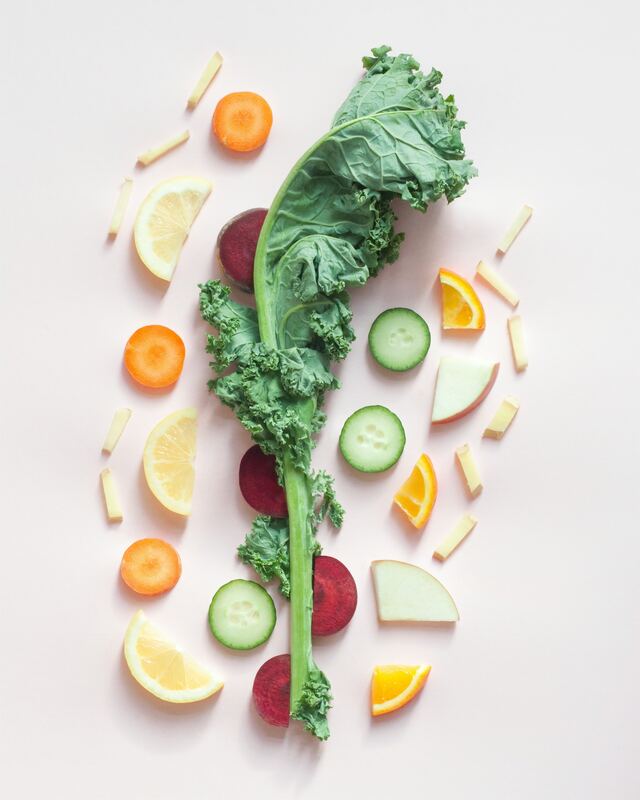The benefits of citrus and how to add more to your diet
By Ranelle Kirchner
There’s more to citrus than just Vitamin C. We don’t hear as much about the other health benefits and reasons to celebrate citrus, so, today, I’m going to do my best to redefine everything you thought you knew about citrus, and  hopefully increase your appetite for more.
hopefully increase your appetite for more.
Rich in fiber, folate, calcium, thiamin, niacin, B6, phosphorous, magnesium, copper, riboflavin, pantothenic acid, and potassium, these nutritional compounds found in citrus can reduce the risk for many chronic diseases. In general, a piece of citrus the size of a baseball is equivalent to one serving of fruit, ranging from 60 – 80 kcal unless its lemon juice. One tablespoon of juice is equivalent to 4 kcal.

Ranelle Kirchner
These calories come mostly from simple carbohydrates (fructose, glucose, sucrose, and even citric acid to a smaller extent). However, the fiber content, which is complex carbohydrate, comes largely from pectin. This is especially important, as fiber allows for increased satiety and delay of gastric emptying (both are good!). Ultimately, promoting a heart-healthy diet that keeps you fuller for longer.
The vitamin breakdown
Vitamin C
Water-soluble, with an important role in the formation of collagen throughout the body, iron absorption, and antioxidant functions. Contrary to what many believe, vitamin C does not prevent colds; it reduces the length and severity of the symptoms.
Folate
Water-soluble that is essential for cell production and growth, specifically in the production of DNA and RNA.
 Potassium
Potassium
A mineral that works to maintain the body’s water and acid balance. It is also an electrolyte with a key role in muscle contraction and maintenance of blood pressure.
Phytochemicals
Monoterpenes, limonoids (triterpenes), flavonoids, carotenoids, and hydroxycinnamic acid are some of more commonly studied phytochemicals. What most of these do for our bodies is still being explored as we continue to perform research. However, we do know these naturally occurring compounds have anticarcinogenic mechanisms and antioxidant capabilities.
Prevention potential
- CVD: Cardiovascular Disease
- Cancer: protective effect
- Neural tube defects
- Anemia: vitamin C increases absorption of iron found in plant foods
- Cataracts: high levels of vitamin C and carotenoids decrease risk
MORE in the work, under review for the possible positive influence of citrus:
- Bone metabolism and osteoporosis
- Kidney stone disease
- Cognitive function
- Asthma
Examples of citrus
Now that we know it’s good for us, what are examples of citrus…other than our trusted orange
| Blood orange Buddha’s hand Calamondin Cara cara orange Citron Clementines Finger lime Grapefruit Kinnow Kumquat |
Lemon (sweet & sour) Lime (Key lime, Persian, Kaffir) Mandarin Navel orange Pomelo Rangpur Tangelo Tangerine Ugli Yuzu |
How to add citrus to your diet
- Add to a salad: freshly sliced citrus wi
 th greens and cheese drizzled in olive oil
th greens and cheese drizzled in olive oil - Make a fresh fruit smoothie, juice, or mixed melange of cut fruit
- Use any citrus juice (fresh is best) to make a vinaigrette
- Roasted beets with wedges of fresh citrus in a yogurt dressing
- Citrus-scented desserts like olive oil cakes or tart
- Roasted with chicken (lemon, olive is a great combo)
- Broiled (grapefruit is common, but try a different citrus fruit for variety and to try something new)
- Use in a ceviche
- Use in a salsa
- Pairs nicely with fish, serve as a garnish or side salad to accompany
- Preserved lemons are a wonderful addition to many dishes. It’s easy to prepare them at home and enjoy for many months to follow
Citrus provides an amazing burst of flavor and color to break through these gray winter days. Now that you have the knowledge and ideas to get you started, get out there and get cooking!
If you’re looking for help to achieve your food and nutrition goals, please reach out to me for a free 15-minute consultation. We can discuss how I can help you with goals, meal planning, and more.
Explore my page to learn more.
Still hungry? Check out my recipes page to get inspired, or to try something new. One of my favorites this time of year is the Brazilian fish stew.
Our guest columnist this week is Ranelle Kirchner, a practicing Registered Dietitian and Le Cordon Blue culinary graduate based in Minnesota. Ranelle earned her Bachelor of Science degree in Nutrition Dietetics from the University of Minnesota, and a Master of Science degree in Clinical Nutrition from Rush Medical College of Rush University Medical Center. Ranelle wears two hats — as a clinical dietitian specializing in diabetes, Ranelle collaborates with endocrinologists and other healthcare team members to address, engage, and manage patients. Her private practice, ChefRDN reflects her passion for health plus all things food, including cooking/nutrition classes, recipe development, grocery store tours, meal planning, and personalized nutrition counseling with a focus on diabetes and weight concerns. Visit her website to read more articles and learn more about her services, and follow along at @KirchnerRanelle on Twitter.




















